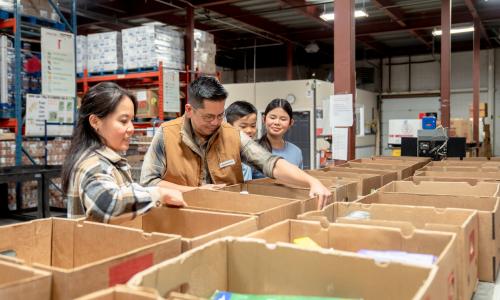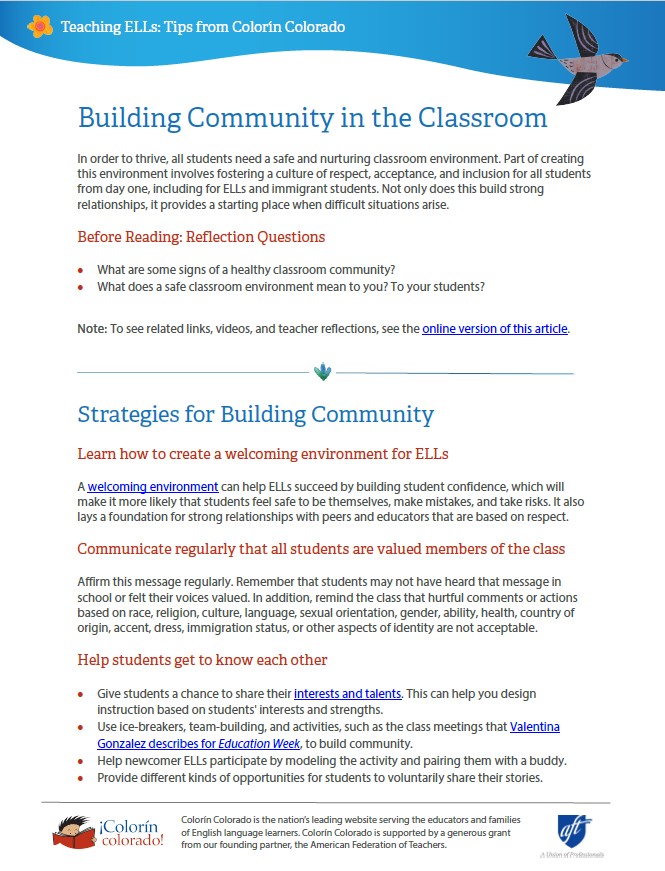When your school community includes families and staff from other countries, you may find that events in other parts of the world suddenly seem closer to home. These may include traumatic events such as natural disasters, political unrest, acts of violence, or other kinds of tragedies. Support for individuals affected by the news can make an important difference in how they manage stress.
Tips for Schools
Download PDF
This article is also available as a downloadable PDF in our guide on navigating tough topics in the classroom.
Culturally responsive support systems
An important first step is identifying culturally responsive ways to provide support.
- Consider pulling a team together of family liaisons, parents, and mental health professionals to discuss culturally appropriate forms of support before starting your outreach.
- Talk with family liaisons or others who know their community well to find out how families (and staff) are responding to current events and what kind of support the school might offer.
Helping students cope
- Identify students who are affected by the disaster and plan appropriate interventions on their behalf. Interventions may include classroom discussions, individual counseling, or small group counseling. By maintaining close contact with teachers and parents, the school crisis response team can help determine which students need counseling services. (NASP)
- Ensure that a schoolwide referral service is in place. Make sure that both students and families who wish to make counseling referrals for themselves or for others are able to do so easily. (NASP)
- Encourage teachers to check in privately with students without putting them on the spot to comment on current events in classroom settings.
- Encourage students to take a news break, continue their daily routines, and try to get plenty of sleep and exercise.
Watching for signs of grief and trauma
- Look for signs of student grief and post-traumatic stress. These may include confusion, problems concentrating, anxiety, and depression. When a loved one has died in a way that has been traumatic, a child or teen is at risk for developing childhood traumatic grief. Learn to recognize the signs of this kind of grief, as well as the ways it may affect learning and behavior. (NCTSN)
- Be sensitive to the unique challenges posed by the disaster. Keep in mind that when there is no physical confirmation of the death, as may happen in an earthquake, the above reactions can be much more intense and long-lasting, and students may need counseling for extended periods of time. (NCTSN)
Working with families
- Provide time for families to meet together. Families are a key source of support for children in difficult times, but they may need support in order to help their children. Consider having family liaisons, interpreters, or representatives from their community present at family discussions. (FEMA)
- Encourage families to tap into their own networks or connect to their support systems. These may include family, friends, community organizations and agencies, faith-based institutions, or other resources that work for that family. (FEMA)
- Ask families for their help and ideas. Families familiar with the situation and students may have some of the best ideas on how the school can further help students and families affected by the disaster. They also may be familiar with relief efforts that are in progress.
Providing staff support
- Provide crisis support for staff. Members of your crisis team should have the opportunity to receive support from a trained mental health professional. Providing crisis intervention is emotionally draining and caregivers will need an opportunity to process their crisis response. (NASP)
- Offer counseling support to school personnel affected by the disaster. Teachers and staff should not be expected to conduct group discussions if they themselves are distressed and severely impacted by the disaster. (NASP)
Building community
- Build a community network. As your school begins to build a support network for families affected by the disaster, connect with other local organizations and businesses (particularly those affiliated with the impacted community), such as social services, university faculty and students, and local businesses.
- Ask local community members for help. Community members may be able to in a number of ways, from providing translation and counseling services to pitching in for schoolwide relief projects. For example, following the 2010 Haitian earthquake, the phones at Evans High in Orlando, FL began ringing off the hook and the office was filled with visitors as concerned neighbors asked how they could help the school's more than 600+ Haitian students and families.
Classroom resources









Add new comment